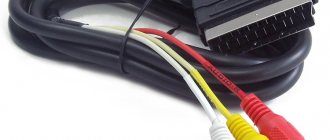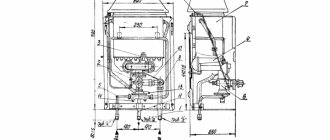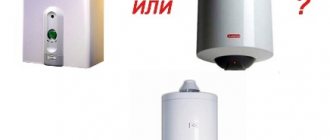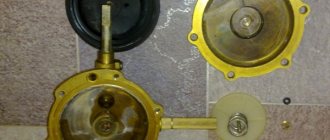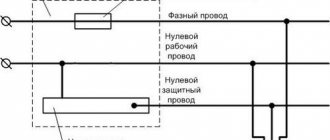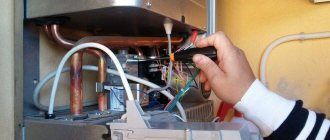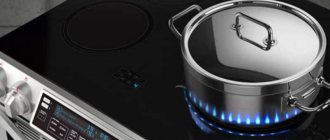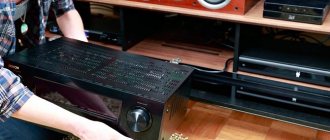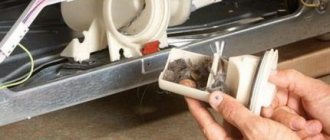Standards, rules and requirements
The operation of gas equipment in the home, due to the high risk of gas leakage and the associated dangerous consequences, must strictly comply with special requirements. In order to safely connect a gas water heater, you first need to take into account the following number of aspects:
- SNiP standards.
- Nuances of self-installation.
- Requirements for wall material.
- Chimney requirements.
Let's look at them in more detail.
SNiP standards
SNiP rules set the following series of requirements both for the equipment and for the room in which it will be installed:
- The volume of the installation room must be at least 7-8 m³.
- The minimum ceiling height is 200 cm.
- The diameter of the chimney channel for gas removal is at least 120 mm.
- It is prohibited to exhaust exhaust gases through the ventilation system.
- The gap between the upper edge of the device and the ceiling surface is from 250 mm.
- The height of the speaker from the floor when attached to the wall is at least 1 meter.
- The room with operating equipment must be naturally ventilated.
- The minimum horizontal distance to the hob is 40 cm. The column should not be located above a hot surface.
Layout of the gas water heater in the kitchen Source gorgazshop.ru
- The lowest operating pressure of the connected water supply is 0.1 atm.
- The wall material to which the equipment is mounted must not support combustion.
- The gas supply must be equipped with a shut-off valve located in close proximity to the unit.
The installation of a boiler room for a gas water-flow heater is permissible in any non-residential premises that meet the parameters of the above requirements. This may be a standard kitchen, but not a studio kitchen or living room, and not a toilet, bathroom or other similar room with constantly high air humidity.
Note! If the rules of the earlier edition allowed the installation of a geyser in a bathroom or toilet, then the new version excludes this possibility. However, if equipment that has been in use for a long time is simply replaced with a new one, then such installation is permitted and is not considered a violation of the law.
In the bathroom it is permissible to install only models that are protected from moist air Source mosoblgaz.ru
Nuances of self-installation
The installation of any gas equipment in the home must be carried out by specialized companies that have the appropriate approval to carry out this type of work. With a different installation method, the following number of problems are possible:
- Impossibility of warranty service. In the event of a breakdown or the need to carry out standard maintenance procedures, not a single specialized company will undertake maintenance without a note in the technical passport about the official installation of the equipment.
- Penalty for unauthorized installation. If representatives of Gorgaz check and discover the presence of unofficially installed equipment in the house, a mandatory fine and requirements for its dismantling or bringing it in accordance with the standards will follow.
- Carrying out mandatory registration procedures. If repairs, maintenance, replacement through service centers or simple connection to the gas mains are necessary, registration of the dispenser will still be required. However, it is easier and cheaper to do it at the installation stage, and not when it is already installed and in operation.
Installation and connection of the water heater should only be carried out by a specialist with permission Source cosmo-frost.ru
In addition, unauthorized installation of a gas water heater in a private house falls under the articles of the administrative code, as well as instructions for the use of gas equipment in everyday life:
- Art. 7.19 of the Code of Administrative Offenses of the Russian Federation - on unauthorized connection and use of gas appliances.
- Order of the VO "Rosstroygazifikatsiya" dated April 26, 1990 N 86-P - on the prohibition of the population from unauthorized gasification of homes, installation and maintenance of gas equipment.
Moreover, if unofficially installed devices lead to a fire or explosion, then the owner of the house will be responsible for damage to property, as well as to the health of others, within the framework of the criminal code.
See also: Catalog of companies that specialize in autonomous gasification of country houses and related work
Wall material requirements
A gas instantaneous water heater should be installed exclusively on a solid wall. At the same time, it must have a sufficient degree of fire resistance. The following materials are allowed:
- Concrete. The concrete-based wall meets the highest fire safety requirements.
- Brick. Meets high fire resistance standards. However, it is preferable to install the equipment on a wall made of solid blocks. For structures made from hollow analogues, it is necessary to use a reinforced fastening system. A similar requirement is also for cellular concrete.
The most reliable and safest way is to attach the column to a wall made of concrete or brick Source liquidsystems.ru
- Drywall. Non-flammable grade material must be used. In this case, a metal frame is used for reliable fixation.
- Tree. In a house with wooden walls, you can also install a geyser, but only on condition that the direct installation site is protected by a special coating of metal and asbestos with a thickness of at least 3 mm, or if a part of the wall is formed under the installation site from non-combustible materials - brick, concrete.
- Plastic panels. Direct installation of the device on an already installed finish is prohibited according to fire safety standards - due to the flammability of the material. However, it is possible to finish the wall with installed units, provided that the necessary gaps are observed to ensure ventilation.
Important! Installing a instantaneous gas water heater directly above the sink is prohibited by the new SNiP rules. This is primarily due to the fact that carbon monoxide is better able to accumulate and settle in damp air. Therefore, the minimum recommended gap of 0.4 m must be maintained to the sink.
The column should be located at some distance from the sink Source feko.com.ua
Chimney requirements
When installing a chimney for a flow-through gas water heater, the following requirements must be met:
- The removal of gaseous combustion products from the unit must occur through a separate pipe.
- The smoke exhaust system must function naturally - forced circulation is prohibited.
- The material of the smoke exhaust hose must withstand heating up to 2000C without deformation - mainly stainless steel.
- The chimney pipe must be rigidly mounted - without the slightest sagging.
- The channel width is set by the manufacturer and indicated in the technical documentation.
Fire safety standards when installing a chimney for a gas water heater also require the creation of fire-resistant gaps in the roof structure and horizontal ceilings when removing the pipe from the room. In this case, the outer parts must be insulated.
The chimney of a gas water heater must meet fire safety requirements Source oteple.com
Rules for installing a geyser
As you probably understand, in order to install any gas appliance, you must comply with the relevant standards and regulations. If you neglect at least one of them, you risk not only getting into trouble with the law, but also causing the death of people close to you.
If you already have an old speaker, then you can easily replace it with a new device yourself. However, installing the device from “a” to “z” with your own hands is prohibited.
If you decide to connect a gas water heater yourself, or entrust only part of the work to special services, then you need to familiarize yourself with the basic rules of SNiP for such installation. They are applicable both in an apartment and in a private house.
SNiP standards:
- Installation of a gas water heater is only possible in a room with a volume of at least 7 cubic meters. meters;
- The wall on which you plan to hang the speaker should be made of non-flammable material, such as brick or concrete.
- The room where the gas water heater will be installed must have a window and a good ventilation system;
- In an apartment with a column, the ceilings must have a height of at least 2 meters;
- In order to install the column, you need to find a chimney in the room;
- For normal operation of the column, the water pressure in the system must be at least 1 atm.
- You cannot install the column in the bathroom or toilet, and the gas unit must be located at a distance of at least 10 cm from the stove. In this case, the column cannot be hung above the stove.
These are new SNiP standards regarding the installation of a gas water heater. The old standards were slightly different, so if your old water heater is installed in the bathroom, you can put a new unit in its place, and this will not be a violation of the law.
Required Documentation
During the initial installation of a flow-through gas water heater, a number of approvals are carried out in various authorities on the following points:
- Obtaining consent for gas supply and installation of offtake from transporters and distributors.
- Perform consumption calculations, create a list of technical conditions.
- Drawing up a project. Agreements are concluded with the relevant authorities and documents for obtaining permits are collected.
- Upon completion of installation of the equipment, contracts are concluded with the city or regional gas service.
In this case, the following list of documents must be prepared:
- A copy of the document confirming the ownership of the house.
- Copy of passport – pages 2, 3 and 5.
- Copy of TIN.
- A copy of the technical passport of the unit.
- Document on concluding a contract for gas consumption.
- Gas installation maintenance agreement.
- A copy of the technical passport of the gas meter and a document on its regular inspection.
- Specifications for connection to the gas main and their confirmation.
- A copy of the project for gasification of the facility with a Gazprom metrology stamp.
Gas water heater in the interior of a modern kitchen Source cdnmyslo.ru
The collected documents are submitted to the appropriate authorities, upon completion of which verification the applicant receives a conclusion on permission and further actions.
Installation stages
When the gas pipeline is connected, the technical conditions are met and permission is received, the direct installation of the equipment begins. However, in order to properly install a gas water heater in a private home, you must first prepare the place to meet the requirements. If the unit is simply replaced, then the old one is first dismantled, and, if necessary, the wall is repaired and the chimney and other components are updated.
The installation procedure is performed according to the following algorithm:
- The front panel is removed from the unit.
- Markings are made for mounting on the wall.
- Fixation points are checked at the building level.
- Holes of the required depth and diameter are drilled.
- Fastening elements are installed.
- A mounting plate or bracket is mounted - if they are included in the water heater kit.
- The unit itself is installed on the plate.
- The chimney pipe is connected and attached to the outlet in the wall.
Installation, connection, and configuration of the column must be performed by a qualified specialist Source tildacdn.com
The front panel is not installed, since the column must first be connected to the water and gas pipeline.
Technical requirements and operation
There are clear regulations regarding the installation of water heaters. Violation of the rules will result in the gas being turned off. You can count on its inclusion only after all the shortcomings have been corrected. Then an inspection is carried out and permission for installation is issued. Manipulations must be carried out by organizations that have the appropriate certificates. Gas connections can only be made if you have permission, so it is important to get them done on time.
The requirements for installing a gas water heater in an apartment are as follows:
- The size of the kitchen must be at least 8 square meters. m.
- It is important that non-combustible materials are used to make walls and masking panels.
- The ceiling is more than two meters high.
- The diameter of the ventilation hole is at least 120 mm.
- Pipes up to 2.5 m long and with a diameter of 13 mm.
- Gas pipes must hang freely or be concealed using an opening box. They cannot be walled up, as free access is necessary.
- The gas shut-off valve should be located next to the heater and have a yellow handle.
- The chimney pipe is made of steel or galvanized, its thickness is at least 1 mm.
- The room must have a door.
The device is operated according to the following rules:
- Gas devices are put on balance and checked once a year.
- There are models that are not serviced by gas workers. In this case, you need to contact the service center and call a specialist.
- When purchasing devices with a closed combustion chamber, there is no need to install a chimney, but more attention should be paid to ventilation.
If the kitchen is combined with living rooms, then using gas appliances in this case is illegal.
Video description
Video example of installing a gas water heater:
Next, a separate branch is laid from it to the unit. There are two possible ways to connect a gas water heater to a gas pipeline:
- Precise pipe delivery directly to the connection point. In this case, the device is first installed, and then a gas pipeline is connected to it. This eliminates the need for a flexible hose. The downside is complete dependence on the work schedule of specialists.
- The approximate pipe connection is 0.5 m before the installation site of the unit. It is permissible to first install the pipeline and then install the column more freely. In this case, for the final connection you will have to use a short flexible pipe. The method allows you to install equipment at any suitable time - regardless of the work hours of the craftsmen.
Upon completion of the procedure, the water heater is connected to a water source. For this purpose, a distributor tee is cut into the cold water supply, from which a separate pipe is led to the heat exchanger. Installation can be done in two ways:
- By bringing the pipe 0.3 m to the unit, and then connecting it with a flexible hose.
- Direct connection using copper, steel or metal-plastic pipes.
Connection diagram for a geyser to water and gas
If you are installing a column for the first time, you will have to run a gas pipe to it. To do this, you will need to invite craftsmen who will cut a tee into the gas pipe and install the pipe on it.
You can hang the pipe directly to the connection point. This gas connection scheme eliminates the need to use a gas hose. In this case, you must first install the column, and only then connect the gas pipe.
The other option is more practical, as it allows you to install the column at any time convenient for you. In this case, the pipe is led to the installation only half a meter, and the remaining route is installed by installing a gas valve.
Next, you need to connect the gas pipe to the water supply. This connection is best made using a movable union nut.
Ball valves are installed on cold and hot water lines. It is also advisable to install coarse and fine filters in front of the column. Such devices will allow you to increase the service life of the heat exchanger.
To connect water to the column, you can run a pipe 30 cm and finish the remaining distance with a flexible hose or connect pipes made of steel, metal-plastic or propylene directly to the column. To install the pipes, you will need to install a special tee into the water supply.
Setup and launch
Before starting any gas equipment, the integrity of the supply lines is first checked. These are primarily seams, joints and joints. The water pipeline should not leak, and the gas pipeline should not allow gas to pass through. If the malfunction of the first is immediately noticeable, then a special method must be used to check the second. Its essence is as follows:
- All inspection points are lubricated with soapy water.
- Next, the gas valve opens.
- A visual inspection of problem areas is carried out.
If soap bubbles appear and grow, it means that the connections are not tight and require replacement or repair.
When the leak test is completed and the detected faults are eliminated, the gas water heater is configured. The procedure is carried out strictly according to the instructions by the masters. They must carry out the first startup and balance the pressure in the system using a pressure gauge.
Briefly about the main thing
Installation, connection and operation of a gas instantaneous water heater in a private house is allowed when considering the following number of aspects:
- SNiP standards.
- Requirements for the material of the surface on which the column will be mounted.
- Requirements for the smoke exhaust system.
- Features of self-installation, and what problems it is associated with.
During the initial installation of a geyser, it is necessary to collect a number of important documents, conclude contracts, obtain consent and permits from special services. The procedure for installing the unit, connecting gas and water to it, as well as further setup and first start-up is carried out strictly according to the instructions by professional specialists with the appropriate approval.
Ratings 0
How to install a geyser
We have come directly to the stage of installing the gas water heater. If you have installed gas lines, received all the necessary documentation and completed all the specifications, then it will not be difficult to install it yourself.
How to install the column correctly:
- The front panel is removed from the column. Using the markings for the speaker mounts, mark the installation locations for the anchors. The correctness of the markings is checked using a building level. Now, according to the markings, you need to drill holes, insert dowels and anchors.
- Most modern speakers have a special mounting plate. It must be installed at the marked level, leveled using a building level.
- Install the column itself onto the plate. Clicks indicate correct installation.
- Lay a corrugated pipe from the outlet of the column to the common chimney. Treat the wall with a hammer drill and insert a chimney. The gap between the wall and the chimney needs to be foamed.
It's too early to install the front panel. First you need to connect to gas and water.
